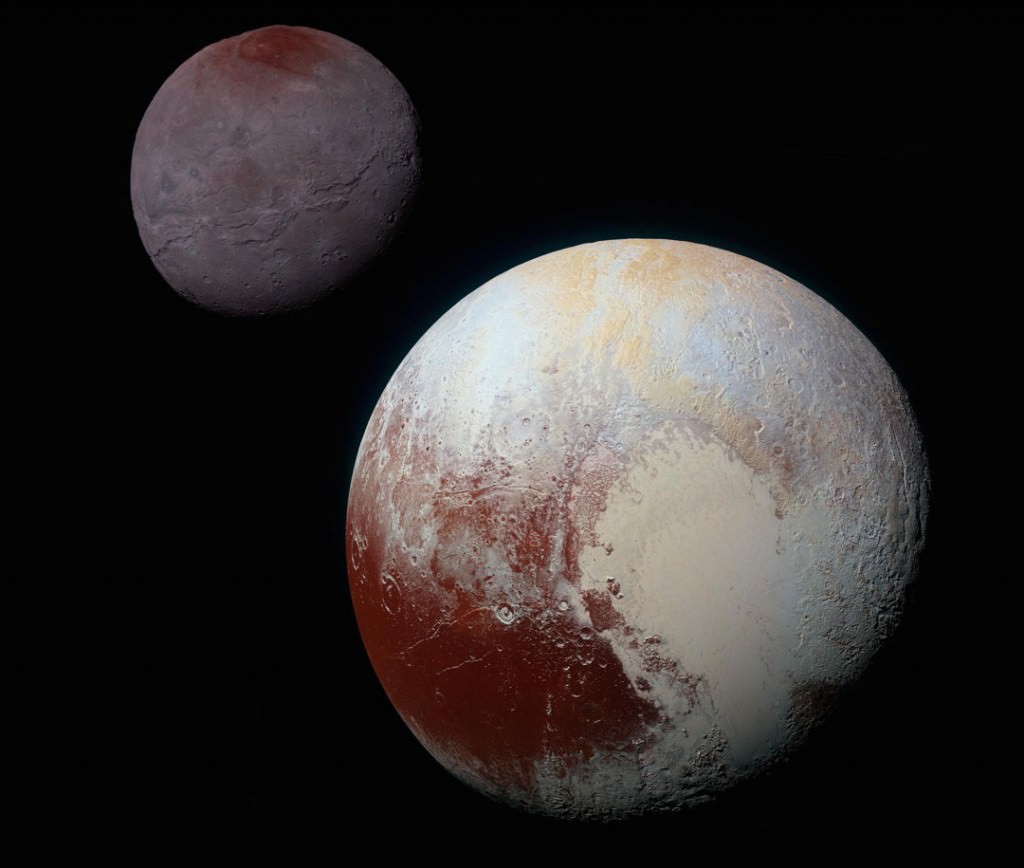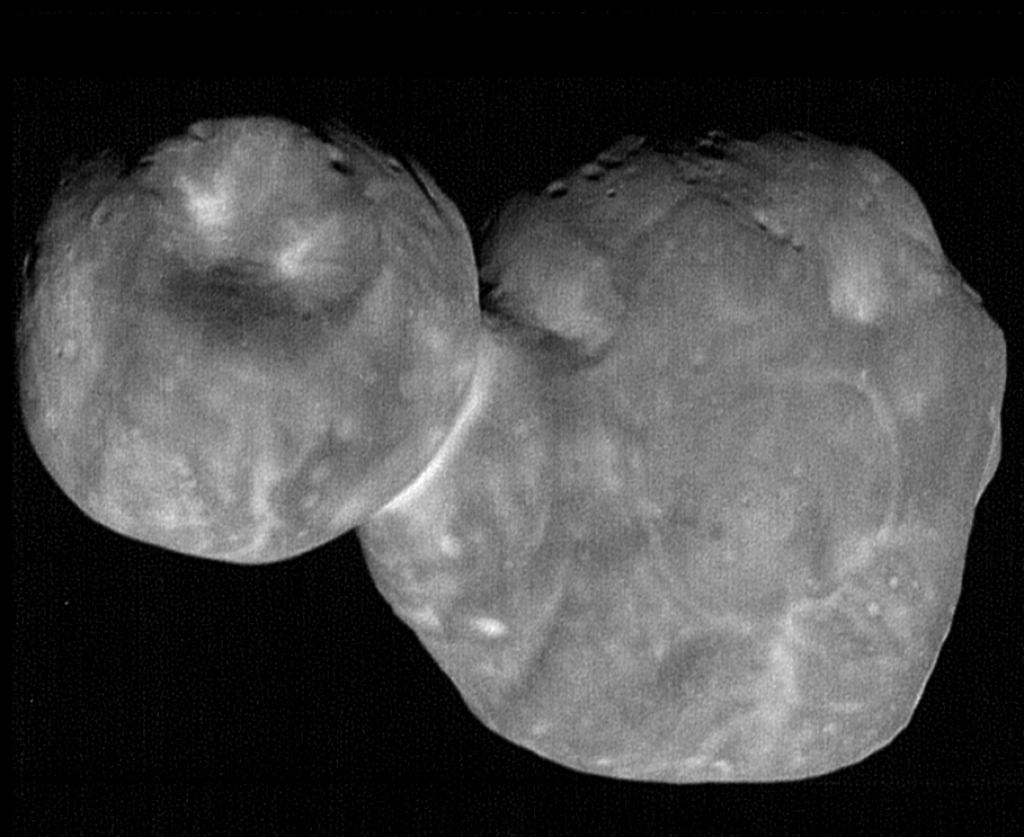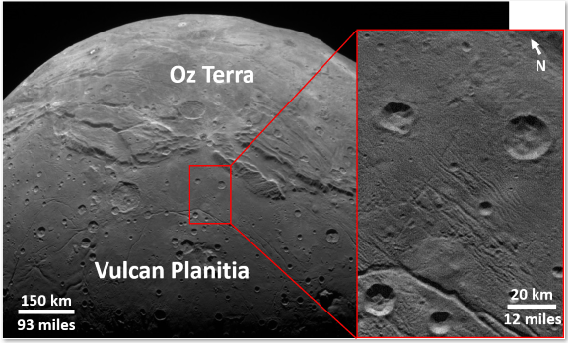In 2015, the New Horizons mission became the first robotic spacecraft to conduct a flyby of Pluto. In so doing, the probe managed to capture stunning photos and valuable data on what was once considered to be the ninth planet of the Solar System (and to some, still is) and its moons. Years later, scientists are still poring over the data to see what else they can learn about the Pluto-Charon system.
For instance, the mission science team at the Southwest Research Institute (SwRI) recently made an interesting discovery about Pluto and Charon. Based on images acquired by the New Horizons spacecraft of some small craters on their surfaces, the team indirectly confirmed something about the Kuiper Belt could have serious implications for our models of Solar System formation.
The study that describes their findings, which recently appeared in the journal Science, was led by Kelsi Singer – the co-investigator of the New Horizons mission from the SwRI. She was joined by researchers from NASA’s Ames Research Center, the Lunar and Planetary Institute (LPI), the Lowell Observatory, the SETI Institute’s Carl Sagan Center, and multiple universities.
To recap, the Kuiper Belt is a large belt of icy bodies and planetoids that orbit the Solar System beyond Neptune, extending from a distance of 30 AU to approximately 50 AU. Much like the Main Asteroid Belt, it contains many small bodies, all of which are remnants from the formation of the Solar System. The main difference is that the Kuiper Belt is much larger, being 20 times as wide and up to 200 times as massive.
After consulting data from the spacecraft’s Long Range Reconnaissance Imager (LORRI), the New Horizons team found that there were fewer craters on the surfaces of Pluto and Charon than expected. This finding implies that there are very few objects in the Trans-Neptunian region that measure between 91 m (300 ft) to 1.6 km (1 mile) in diameter. As Dr. Singer explained in a recent JHUAPL press statement:
“These smaller Kuiper Belt objects are much too small to really see with any telescopes at such a great distance. New Horizons flying directly through the Kuiper Belt and collecting data there was key to learning about both large and small bodies of the Belt.”
To put it simply, craters on Solar System bodies act as a sort of record, indicating how many impacts and of what size the body has experienced over time. To astronomers and planetary scientists, these provide hints about the history of the object and its place in the Solar System. Since Pluto is so far from Earth, very little was known about its surface prior to the historic flyby by the New Horizons mission.

Much like the glaciers of nitrogen ice and incredibly tall mountains (which reached as high as 4 km/2.5 mi) on its surface, the small craters witnessed by New Horizons are indicative of Pluto’s history. Similar to the Main Asteroid Belt, Kuiper Belt Objects (KBOs) are essentially “feedstock” from which larger bodies in the Solar System formed roughly 4.6 billion years ago.
This latest study, which places constraints on the number of smaller KBOs, could therefore provide clues about the formation and history of the Solar System. As Alan Stern, the New Horizons mission’s principal investigator (also of SwRI) explained it:
“This breakthrough discovery by New Horizons has deep implications. Just as New Horizons revealed Pluto, its moons and, more recently, the KBO nicknamed Ultima Thule in exquisite detail, Kelsi’s team revealed key details about the population of KBOs at scales we cannot come close to directly seeing from Earth.”
To be fair, Pluto undergoes geological processes that have altered some evidence of its impact history. A good example of this is endogenic resurfacing, where convection between the surface and interior causes the surface undergo periodic renewal. However, Charon is relatively static from a geological point of view, which provided the New Horizons team with a more stable record of impacts.

These results are in keeping with a major aspect of the New Horizons’ mission, which is to better understand the Kuiper Belt. And with its recent flyby of Ultima Thule, the mission has now provided data on the surfaces of three distinct Solar System bodies. And data from that flyby is in agreement with the data obtained from Pluto and Charon.
As noted, this latest study could help resolve ongoing disputes about the formation of our Solar System. While there is a relative consensus that our Sun and the planets formed from a molecular cloud starting 4.6 billion years ago, different models have been proposed that result in different populations and locations of Solar System objects.
“This surprising lack of small KBOs changes our view of the Kuiper Belt and shows that either its formation or evolution, or both, were somewhat different than those of the asteroid belt between Mars and Jupiter,” said Singer. “Perhaps the asteroid belt has more small bodies than the Kuiper Belt because its population experiences more collisions that break up larger objects into smaller ones.”
These findings may also influence the planning of future missions to the Main Asteroid Belt and the Trans-Neptunian region. The more we know about the objects in these two belts – like how many there are, their compositions and their sizes – the more we stand to learn about how our Solar System came to be.

